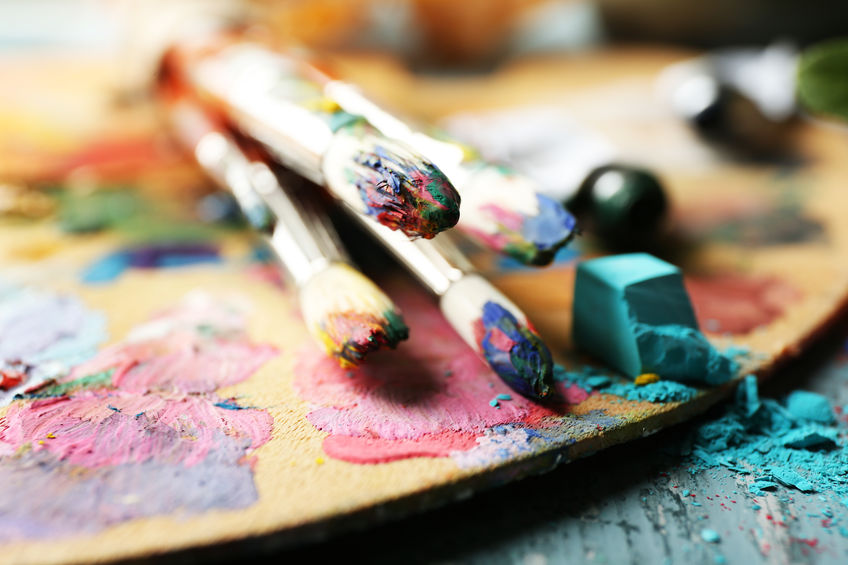
Paintbrushes come in all shapes and sizes. From round brushes to fan brushes, there are a wide variety you can choose from. The paintbrush shape you do choose, though, will depend on what it is that you’re painting. Acrylic, for instance, needs a different paintbrush than watercolor. Additionally, you can’t use a large fan brush for painting small details.
Here we discuss each paintbrush shape to help you decide which one is right for your next painting:
Round
Round brushes are thin and small with a rounded or pointed tip. Their bristles are gathered close together, making them an ideal brush for painting details or smaller areas of your work.
Good For:
- Details
- Thin or thick lines (add pressure to add thickness)
- Filling in small areas
- Outlining
- Sketching
- Controlled washes
Rigger
These look similar to round brushes, and indeed they are used for similar purposes. Nevertheless, a rigger is longer and thinner, thus able to achieve even finer details than a round brush.
Good For:
- Very fine details
- Lettering
- Calligraphy
- Delicate areas
- Spotting or Retouching
Flat
As the name suggests, these types of brushes are flat and rectangular. They are extremely versatile, able to work with various methods and paints.
Good For:
- Filling in medium to large areas
- Bold strokes
- Washes
- Impasto
- Fine lines by using the edge of the brush
Bright
Similar to the flat brush, bright brushes are flat and rectangular but curve inwards towards the tip. They have short and stiff bristles that work well with heavy body paints.
Good For:
- Thick lines
- Heavy colors and paints
- Short strokes
- Working up close
Filbert
Narrow and rounded at the top, filbert brushes add a soft touch to your painting. They are flat and have medium to long hairs.
Good For:
- Soft edges
- Blending
- Details
Fan
With hairs spread out flat like a fan, it’s no wonder how the fan brush got its name. They can cover a wide area with a light touch.
Good For:
- Blending
- Feathering
- Texture
- Natural elements (clouds, leaves, etc.)
- Smoothing
Angular Flat
This is a flat brush where the tips of the bristles are cut at an angle. The tip of the brush allows you to paint in corners you otherwise couldn’t reach.
Good For:
- Filling in corners
- Curved strokes
- Small areas
- Large areas
For more advice on choosing the best paintbrush for your next work, sign up for a beginner’s painting class here at Creative Ventures Gallery.
